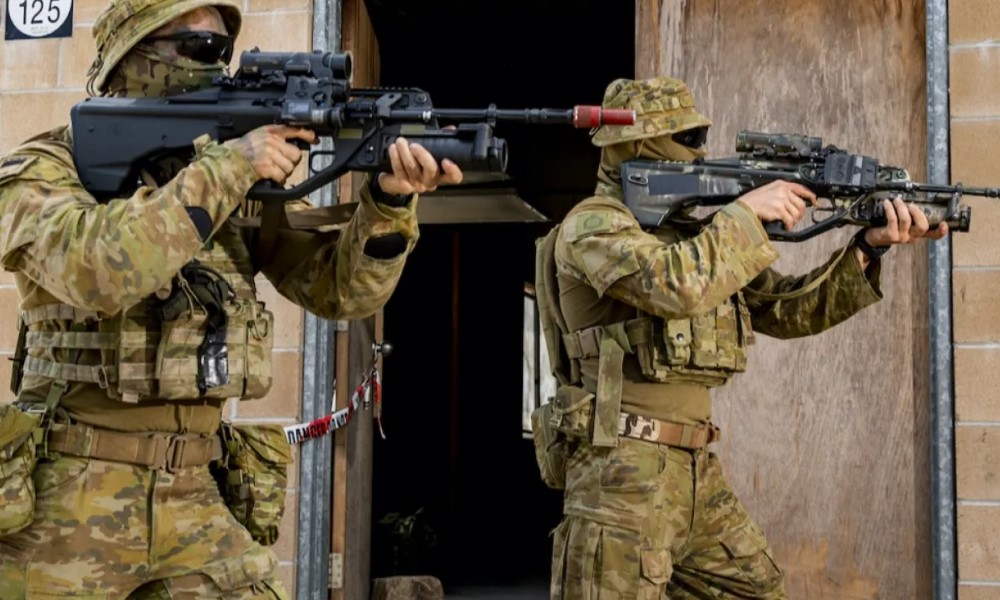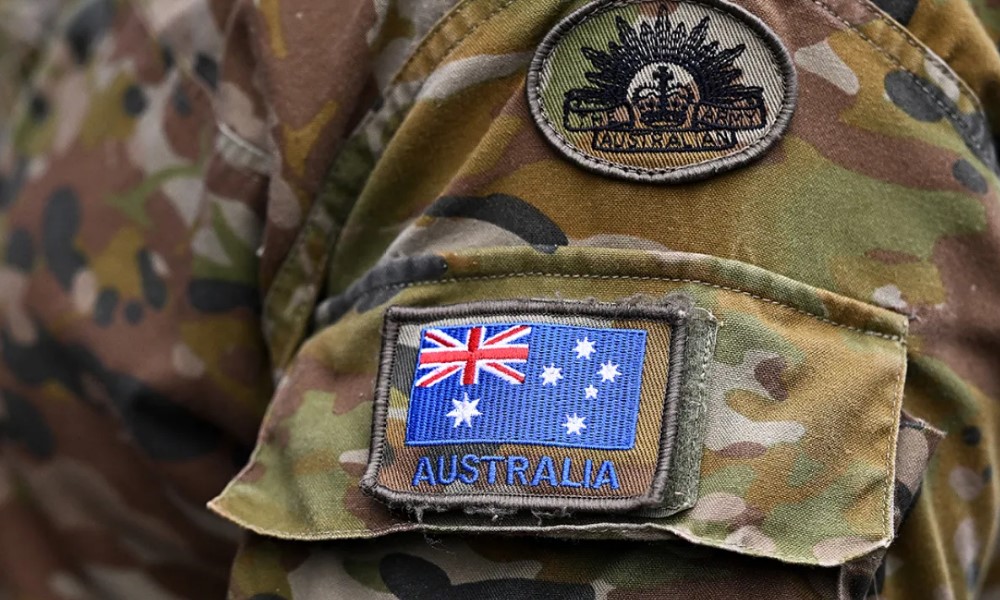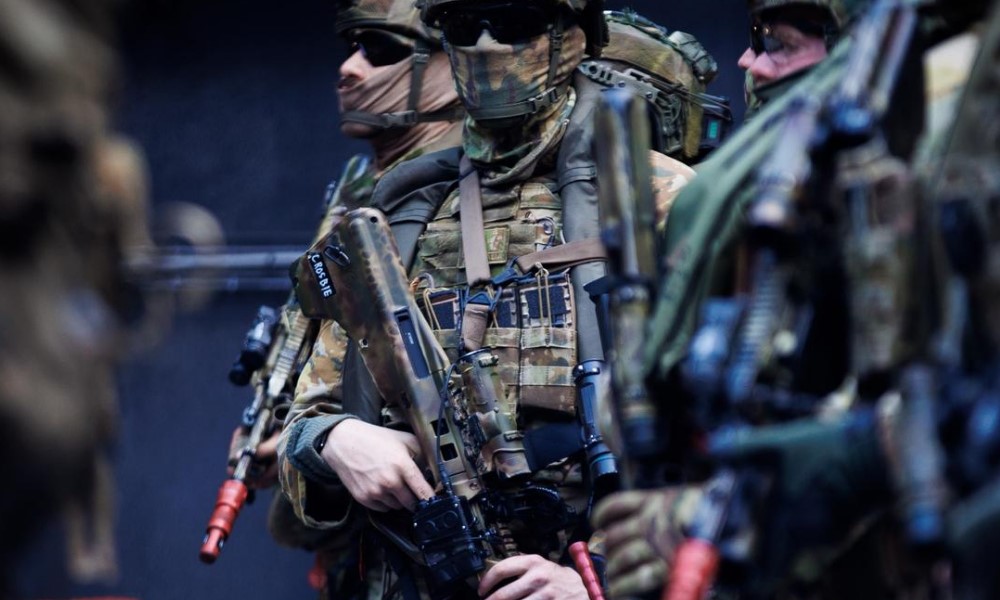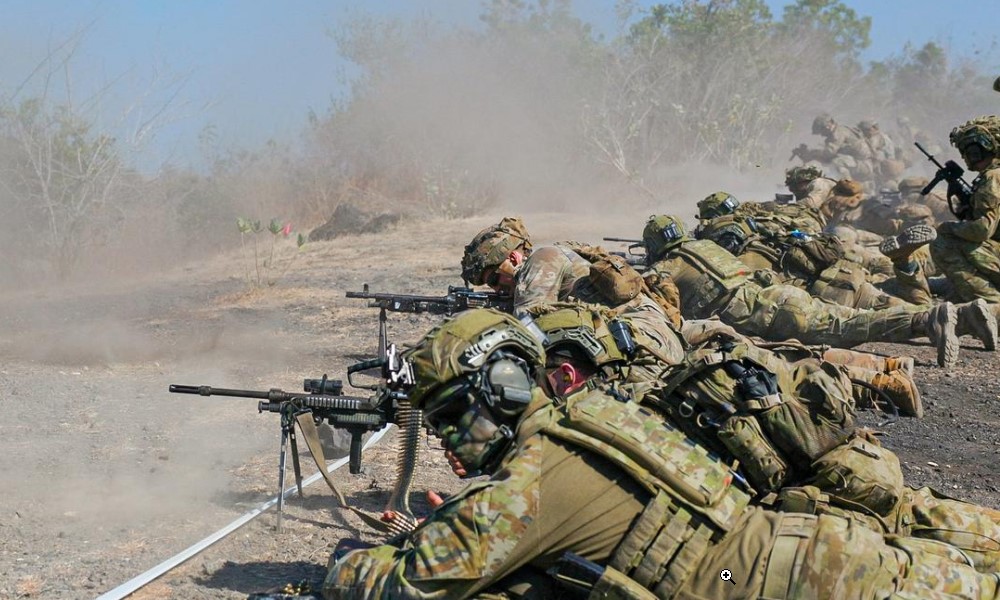The Australian Defence Force (ADF) is responsible for the defense and security of Australia. It consists of the Royal Australian Navy (RAN), Australian Army, and Royal Australian Air Force (RAAF), each playing a critical role in ensuring the nation’s safety. This article focuses on the products, technologies, and services that support ADF operations. From ground vehicles to advanced aircraft, the ADF’s use of cutting-edge equipment is essential for maintaining its operational edge.
Overview of the Australian Defence Force (ADF)

The Australian Defence Force (ADF) is a military organization comprised of the Royal Australian Navy (RAN), the Australian Army, and the Royal Australian Air Force (RAAF). The ADF is tasked with protecting Australia’s borders, safeguarding its interests, and contributing to international peacekeeping missions. Its operations are supported by a wide range of military-grade equipment and services designed to ensure readiness in various environments, from land to sea and air.
Each branch of the ADF operates distinct systems and technologies tailored to its specific domain. For example, the Royal Australian Navy utilizes submarines and maritime patrol aircraft, while the Australian Army employs armored vehicles and ground-based tactical communication systems. The Royal Australian Air Force utilizes advanced aircraft like the F-35 Lightning II to maintain air superiority and provide reconnaissance capabilities.
Key Features of Australian Defence Force (ADF)

The Australian Defence Force (ADF) plays a critical role in safeguarding the nation’s security and sovereignty. Comprised of the Royal Australian Navy (RAN), Australian Army, and Royal Australian Air Force (RAAF), the ADF is a highly capable and versatile military organization. Below are some of the key features that define the ADF’s operational success and global reputation.
1. Integrated Multi-Domain Force
One of the defining features of the ADF is its ability to operate across multiple domains—land, sea, air, and cyber. The ADF’s integrated structure allows the Army, Navy, and Air Force to work together seamlessly during joint operations, providing the flexibility needed to respond to both traditional and unconventional threats. This integration ensures that the ADF can respond quickly to challenges in Australia’s region, including peacekeeping missions, disaster relief, and full-scale military operations.
2. Advanced Technology and Equipment
The ADF uses cutting-edge technology to maintain a strategic advantage in all areas of military engagement. For example, the F-35 Lightning II fighter jets provide the Royal Australian Air Force with state-of-the-art stealth and combat capabilities. Similarly, the Collins-class submarines in the Navy offer superior maritime defense and covert surveillance capabilities. The Thales Bushmaster armored vehicle, used by the Army, ensures ground troops are protected in hostile environments.
3. Highly Trained Personnel
A key feature of the ADF is the high level of training provided to its personnel. Australian soldiers, sailors, and airmen undergo rigorous training programs that prepare them for a wide range of operational scenarios. This ensures that they can adapt to various mission requirements, from combat to humanitarian assistance and disaster relief. The ADF invests heavily in developing leadership, technical, and combat skills in its personnel, making them one of the most capable forces in the region.
4. Strategic Alliances and Partnerships
The ADF is part of several international alliances, including its long-standing partnership with the United States under the ANZUS Treaty. These strategic alliances ensure Australia remains integrated with global defense systems and has access to the latest military technologies and intelligence-sharing networks. The ADF frequently participates in joint exercises with other nations, improving interoperability and operational readiness.
5. Commitment to Peacekeeping and Humanitarian Missions
Beyond combat roles, the ADF is actively involved in peacekeeping and humanitarian missions worldwide. The ADF has a strong history of providing aid during natural disasters, particularly within the Asia-Pacific region. This commitment highlights the ADF’s versatility and its role in contributing to global stability.
Benefits of Using ADF-Grade Products and Services

When it comes to defense and military operations, the products and services used by the ADF provide a wide array of benefits. Here’s a breakdown of the core advantages of these products:
1. Enhanced Operational Efficiency
ADF-grade equipment is built to the highest military standards, ensuring that personnel can carry out missions effectively and with minimal risk. Advanced technology allows for seamless communication, quick decision-making, and faster execution of strategies.
2. Safety and Protection
Military operations involve significant risks, but the use of top-tier defense products mitigates these risks. Armored vehicles like the Thales Bushmaster offer protection from small arms fire, roadside bombs, and other threats, ensuring the safety of soldiers in hostile environments.
3. Real-Time Communication and Coordination
In military operations, real-time communication is crucial. Tactical radios like the Harris Falcon III allow ground troops to communicate securely, ensuring that all units are coordinated. This real-time exchange of information enables quicker response times and effective tactical maneuvers.
4. Strategic Advantages with Cutting-Edge Technology
The use of advanced aircraft like the F-35 Lightning II provides the ADF with a strategic edge in both air combat and reconnaissance. Its stealth technology and advanced avionics make it nearly undetectable by enemy radar, giving Australia a significant advantage in any conflict situation.
5. Long-Term Cost Efficiency
While the initial investment in military-grade products can be high, these products are designed for longevity and resilience. This durability ensures that they provide long-term value, reducing the need for frequent replacements and repairs.
Top 5 Products Supporting the Australian Defence Force (ADF)

To give you a better understanding of the critical products used by the ADF, here are five real-world examples of equipment that play an essential role in defense operations. Each product has been carefully selected for its relevance to the ADF’s mission.
a. Thales Bushmaster Protected Mobility Vehicle
The Thales Bushmaster is a heavily armored, mine-resistant, all-terrain vehicle designed to transport soldiers safely across hostile environments. It is known for its superior blast protection and ability to navigate challenging terrains, making it an essential vehicle for peacekeeping and combat missions.
Use Case:
This vehicle is primarily used in conflict zones where roadside bombs and ambushes are a threat. It offers significant protection to troops, making it ideal for transportation in dangerous environments.
Key Features:
- Blast Protection: Protects troops from landmines and IEDs (Improvised Explosive Devices).
- All-Terrain Capability: Can traverse rough terrains such as deserts, jungles, and mountainous regions.
- Seating Capacity: Can carry up to 10 soldiers with full combat gear.
- Advanced Communication Systems: Integrated systems that allow seamless communication between troops and command centers.
Pricing: Approximately $500,000 USD per unit.
Where to Buy: Available for procurement through Thales Group with customized military contracts.
b. Lockheed Martin F-35 Lightning II Fighter Jet
The F-35 Lightning II is an advanced fifth-generation stealth fighter aircraft used by the Royal Australian Air Force. This multi-role aircraft is capable of performing air-to-air combat, intelligence gathering, and ground attack missions, providing a significant advantage in modern warfare.
Use Case:
The F-35 is employed in high-stakes scenarios requiring air dominance. Its stealth capabilities make it perfect for reconnaissance missions where evading detection is critical, while its advanced weapon systems ensure superiority in air-to-air combat.
Key Features:
- Stealth Technology: Reduces radar visibility, allowing the aircraft to operate undetected in hostile airspace.
- Advanced Avionics: Equipped with radar, electronic warfare systems, and GPS to enhance situational awareness.
- Missile Integration: Can carry a variety of air-to-air and air-to-ground missiles.
- Supersonic Speed: Capable of achieving speeds of over 1,200 miles per hour.
Pricing: Approximately $89 million USD per unit.
Where to Buy: Available via Lockheed Martin under military contracts and agreements.
c. Collins Class Submarine
The Collins Class Submarine is a diesel-electric attack submarine used by the Royal Australian Navy. It offers long-range surveillance, covert operations capabilities, and the ability to engage enemy submarines and surface vessels. This submarine is essential for Australia’s naval defense strategy.
Use Case:
Best suited for covert intelligence-gathering, special operations, and defending Australia’s maritime interests. The submarine can patrol Australian waters and beyond, engaging enemy vessels when necessary.
Key Features:
- Long Operational Range: Can patrol vast oceanic distances with minimal need for resupply.
- Stealth Capabilities: Designed to operate undetected underwater.
- Advanced Sonar Systems: Capable of detecting enemy vessels from great distances.
- Torpedo Systems: Armed with advanced torpedoes for both defensive and offensive operations.
Pricing: Estimated $1 billion USD per unit.
Where to Buy: Available through Australian Navy Procurement.
d. Boeing P-8A Poseidon Maritime Patrol Aircraft
The Boeing P-8A Poseidon is an advanced aircraft used by the ADF for maritime patrol and anti-submarine warfare. It offers state-of-the-art sensors and weapon systems, making it crucial for monitoring and defending Australia’s vast maritime territory.
Use Case:
The P-8A Poseidon is essential for patrolling Australia’s coastal regions, detecting enemy submarines, and engaging in search-and-rescue missions. Its ability to operate over large bodies of water for extended periods makes it invaluable for maritime surveillance.
Key Features:
- Advanced Sonar and Radar: Can detect submarines and surface vessels from long distances.
- Long-Range Flight: Capable of patrolling Australia’s maritime borders for extended periods.
- Weapon Integration: Can deploy torpedoes and depth charges to engage enemy submarines.
- Real-Time Data Transmission: Shares data with command centers for immediate tactical responses.
Pricing: Approximately $220 million USD per unit.
Where to Buy: Available via Boeing Defense.
e. Harris Falcon III Tactical Radio
The Harris Falcon III is a tactical radio that provides secure communication for military personnel. It supports both voice and data transmission, offering soldiers in the field a reliable means of communication in any environment.
Use Case:
The Harris Falcon III is widely used by ADF ground forces for coordinating battlefield operations. It ensures secure communication, reducing the risk of intercepted transmissions.
Key Features:
- Secure Communication: Utilizes encrypted signals to prevent interception.
- GPS Integration: Allows for accurate location tracking and navigation.
- Multi-Band Capability: Supports various frequencies for different operational needs.
- Lightweight Design: Portable and easy to carry in the field.
Pricing: Around $15,000 USD per unit.
Where to Buy: Available through L3Harris Technologies.
4. Detailed Product Comparison Table
To help you better understand the differences between these products, here’s a comparison table based on their use case, advantages, disadvantages, pricing, and key features:
| Product | Use Case | Advantages | Disadvantages | Price | Key Features |
|---|---|---|---|---|---|
| Thales Bushmaster | Troop transport in hostile areas | High mobility, blast protection | High cost, requires specialized maintenance | $500,000 USD | All-terrain, blast protection, communication systems |
| Lockheed Martin F-35 | Air combat and reconnaissance | Stealth, advanced avionics | Extremely high cost | $89 million USD | Stealth, supersonic, advanced radar systems |
| Collins Class Submarine | Covert surveillance and defense | Long range, stealth capabilities | High operational cost, limited deployment | $1 billion USD | Torpedo systems, sonar, long range |
| Boeing P-8A Poseidon | Maritime patrol and anti-sub warfare | Long-range, advanced radar and sonar | Expensive operational costs | $220 million USD | Sonar, radar, torpedoes, real-time data sharing |
| Harris Falcon III Radio | Secure battlefield communication | Secure, reliable communication | Only for military use | $15,000 USD | GPS, multi-band, encrypted communication |
How to Purchase ADF Products
Many of these products are only available through government procurement contracts. However, for military contractors or authorized personnel, here are the steps to purchase ADF-related products:
- Contact the Manufacturer: Visit the respective manufacturer’s website (e.g., Thales, Lockheed Martin, Boeing) and submit an inquiry for procurement.
- Request a Quote: For high-value products like aircraft or submarines, companies typically require detailed government agreements and approval processes.
- Finalize Contracts: Military-grade equipment often involves lengthy contract negotiations, including delivery timelines, maintenance agreements, and training programs.
You can also explore the following websites for direct procurement options:
- Thales Bushmaster
- Lockheed Martin F-35
- Collins Class Submarine
- Boeing P-8A Poseidon
- Harris Falcon III
Frequently Asked Questions (FAQs)
1. What is the role of the Australian Defence Force (ADF)?
The ADF is tasked with protecting Australia’s interests, defending its borders, and contributing to international peacekeeping missions. It operates across air, sea, and land domains.
2. Can civilians buy ADF-grade equipment?
Some products, like tactical radios, may be available to civilians or contractors, but most military-grade equipment requires government procurement.
3. How does the ADF ensure the quality of its products?
The ADF partners with global defense manufacturers like Thales and Lockheed Martin to ensure that all equipment meets rigorous military standards for safety, reliability, and effectiveness.
4. Why are ADF products so expensive?
Military-grade products require cutting-edge technology, extensive research and development, and rigorous testing to ensure they meet the demands of modern warfare, contributing to their high costs.
5. How long do ADF products last?
ADF equipment is built for durability and can last for decades with proper maintenance, which is why it is seen as a long-term investment despite its initial cost.